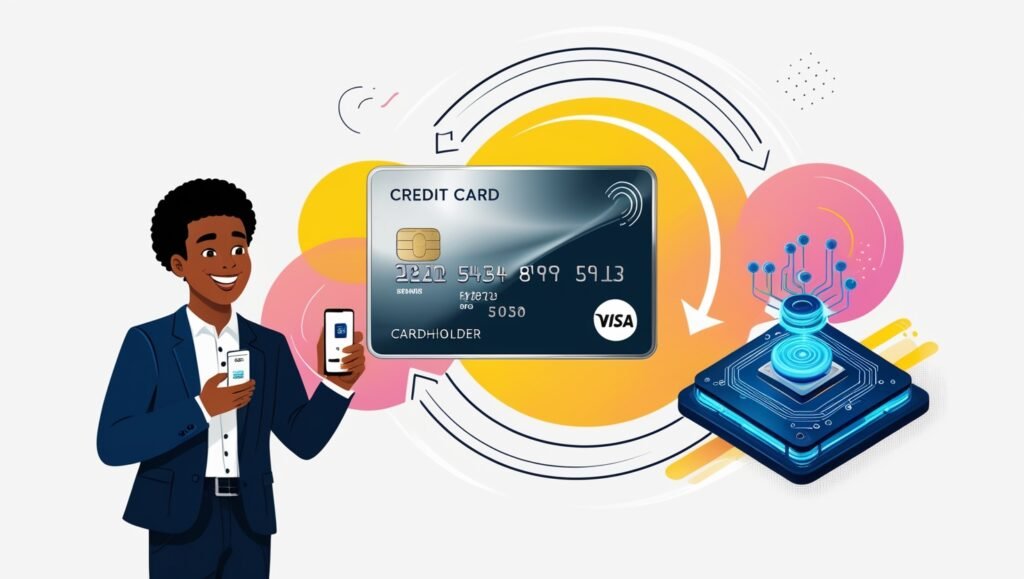Credit cards are financial tools that allow consumers to borrow funds to make purchases or pay for services. Unlike debit cards, which draw money directly from your bank account, credit cards let you access a pre-approved credit limit that you must repay, usually with interest, if not paid off within a certain period. Understanding how credit cards work can help you use them wisely and avoid common pitfalls.
How Do Credit Cards Work?

When you use a credit card to make a purchase, the card issuer temporarily covers the cost on your behalf. You then repay the issuer either in full by the due date or over time through minimum payments. If you choose to pay over time, interest charges typically apply.
Key Features of Credit Cards
1. Credit Limit
Your credit limit is the maximum amount you can borrow using the card. This limit is determined by your income, credit score, and the policies of the card issuer.
2. Interest Rates (APR)
The annual percentage rate (APR) represents the cost of borrowing on the card if you carry a balance. Paying your bill in full each month helps you avoid these charges.
3. Minimum Payments
This is the smallest amount you must pay each month to keep your account in good standing. However, paying only the minimum can lead to significant interest charges over time.
4. Rewards and Benefits
Many credit cards offer rewards like cashback, travel points, or discounts. Additionally, some cards include perks such as travel insurance, purchase protection, and extended warranties.
Types of Credit Cards

There are various types of credit cards, each designed to suit different financial needs:
- Rewards Credit Cards: Offer points, cashback, or travel miles for every dollar spent. For example, the Chase Sapphire Preferred® Card provides bonus points on travel and dining purchases.
- Low-Interest Credit Cards: Feature lower APRs, ideal for those who may carry a balance. An example is the Citi® Diamond Preferred® Card, which offers an introductory 0% APR for a specific period.
- Balance Transfer Cards: Allow you to transfer existing debt to a card with a lower interest rate. The Discover it® Balance Transfer card, for instance, offers an introductory 0% APR on balance transfers.
- Secured Credit Cards: Require a cash deposit and are great for building or rebuilding credit. For example, the Capital One Platinum Secured Credit Card is designed for those with limited or poor credit.
- Student Credit Cards: Tailored for college students with limited credit histories, often with low fees and rewards. The Discover it® Student Cash Back card offers cashback rewards and no annual fee.
- Business Credit Cards: Provide features and rewards suited to business expenses and management. An example is the American Express® Business Gold Card, which offers rewards on business-related purchases.
- Travel Credit Cards: Offer travel-related benefits such as miles, hotel discounts, and no foreign transaction fees. The Capital One Venture Rewards Credit Card, for example, provides miles that can be redeemed for travel expenses.
Advantages of Using Credit Cards
- Convenience: Credit cards are widely accepted and eliminate the need to carry cash.
- Building Credit History: Responsible use of a credit card helps build and improve your credit score.
- Emergency Access to Funds: Credit cards can provide a financial safety net in urgent situations.
- Rewards: Many cards offer incentives like cashback or travel points for every dollar spent.
- Fraud Protection: Credit cards often include zero-liability policies for unauthorized transactions.
Potential Disadvantages
- High-Interest Rates: Carrying a balance can lead to costly interest charges.
- Debt Accumulation: Overspending can result in unmanageable debt.
- Fees: Late payment fees, annual fees, or foreign transaction fees can add up.
- Credit Score Risks: Missing payments or maxing out your card can negatively impact your credit score.
Tips for Using Credit Cards Wisely
- Pay Your Balance in Full: Avoid interest charges by paying your statement balance in full each month.
- Track Your Spending: Regularly review your transactions to stay within your budget.
- Use Rewards Strategically: Choose a card that aligns with your spending habits to maximize benefits.
- Set Payment Reminders: Ensure timely payments to avoid late fees and protect your credit score.
- Avoid Maxing Out: Keep your credit utilization below 30% of your limit to maintain a healthy credit score.
How to Choose the Right Credit Card
When selecting a credit card, consider the following:
- Purpose: Are you looking to build credit, earn rewards, or secure a low-interest rate?
- Fees: Check for annual fees, foreign transaction fees, and other charges.
- Interest Rate: Look for cards with competitive APRs, especially if you anticipate carrying a balance.
- Rewards Program: Choose a card that offers rewards suited to your spending habits, such as cashback or travel perks.
- Credit Requirements: Ensure your credit score meets the card issuer’s eligibility criteria.
Conclusion
Credit cards can be valuable financial tools when used responsibly. They offer convenience, rewards, and a way to build your credit history. However, they also require discipline to avoid debt and interest charges. By understanding how credit cards work, the types available, and following best practices, you can make the most of your credit card while maintaining financial stability.
For more financial tips and resources, visit The Finance Bot and take charge of your financial future!




Pingback: Credit Cards vs. Debit Cards: What’s the Difference? - The Finance Bot
Pingback: Top Credit Cards for 2024: Your Ultimate Guide to Choosing the Best - The Finance Bot